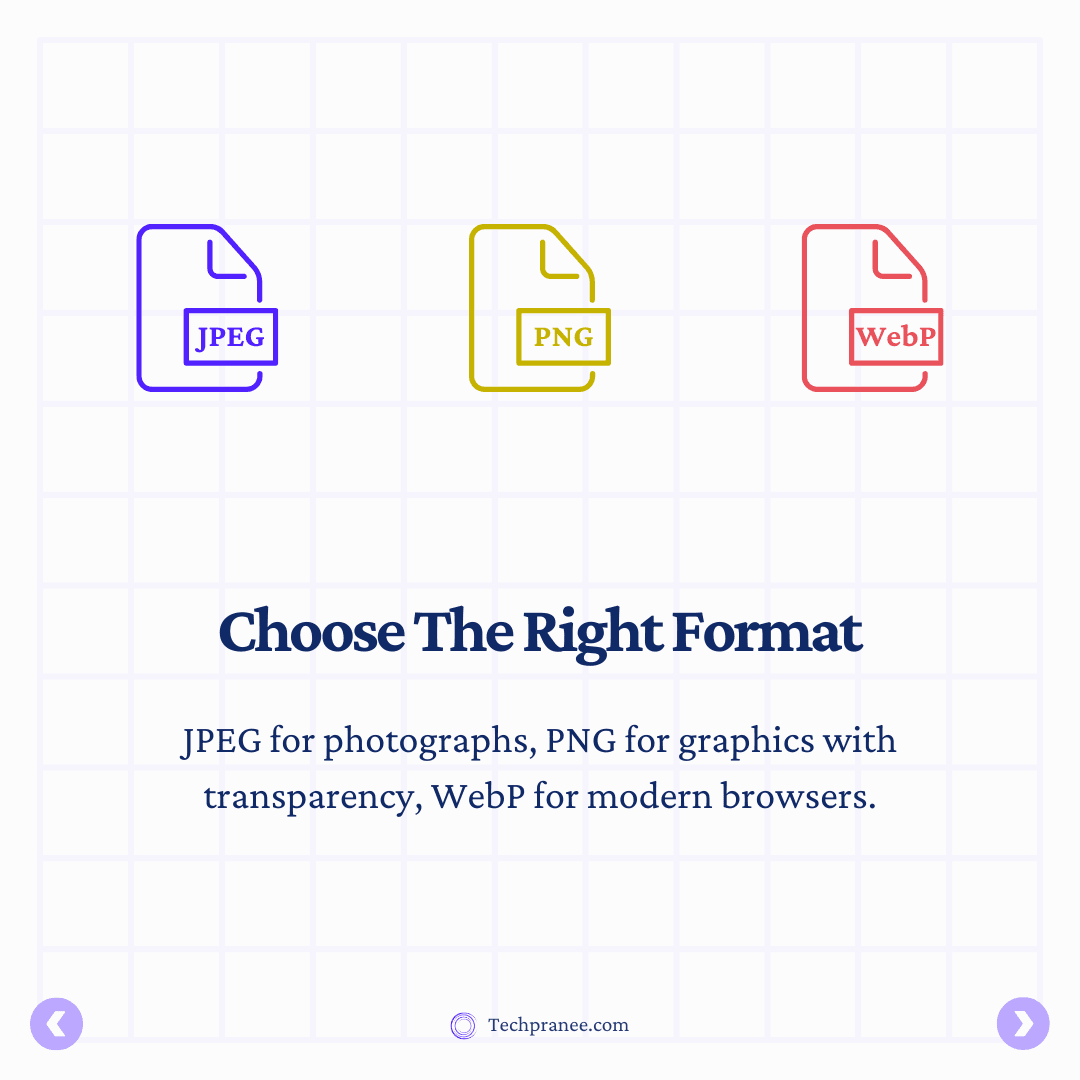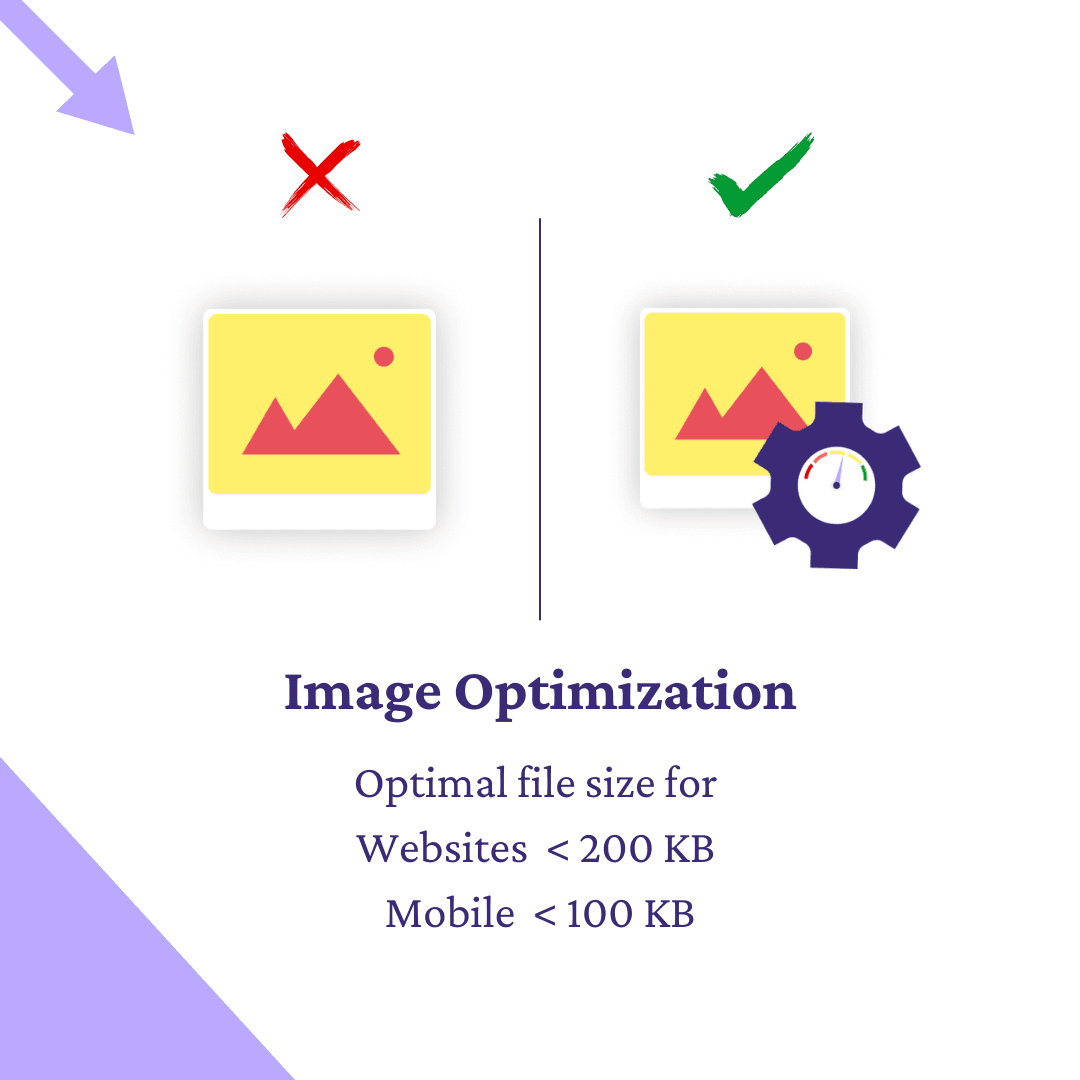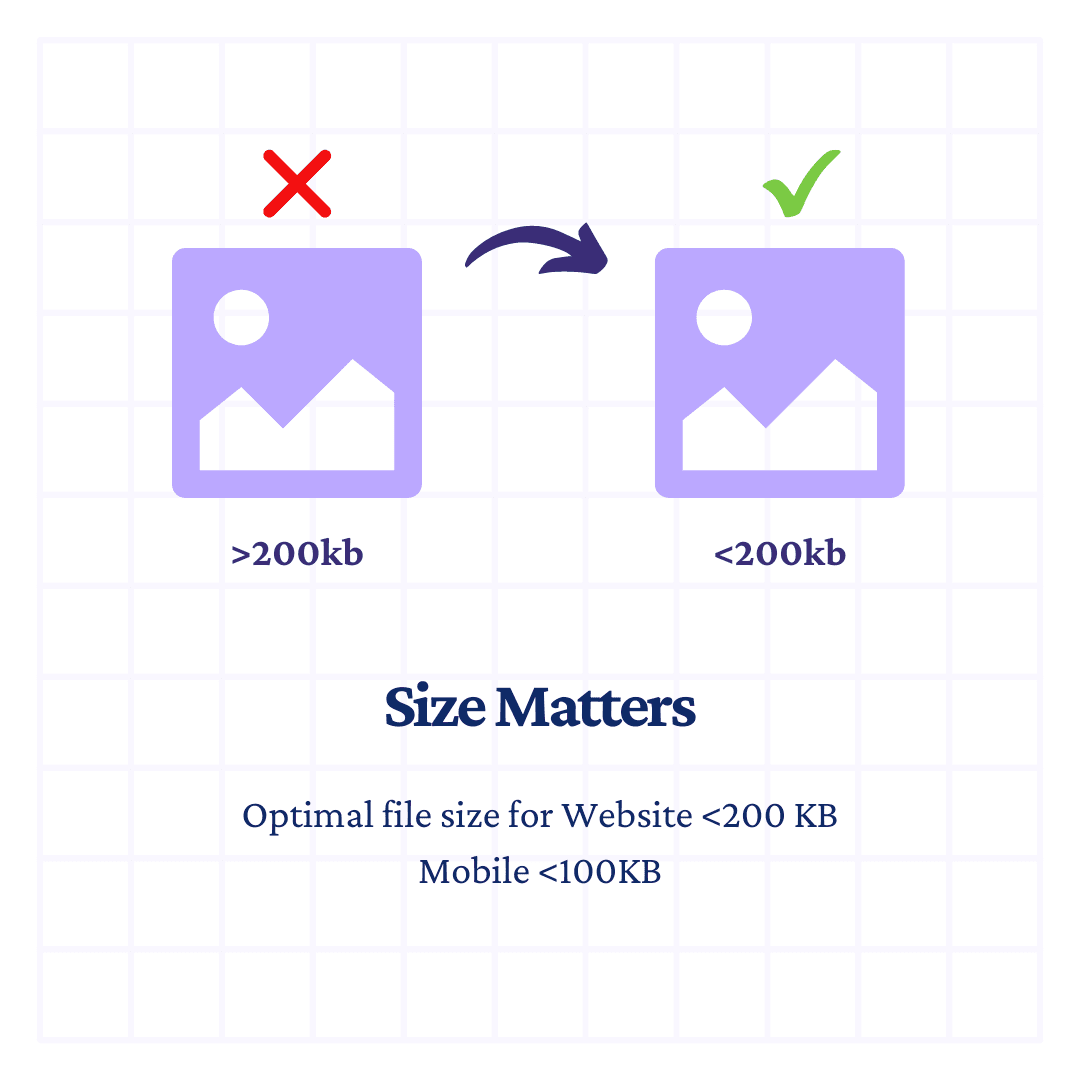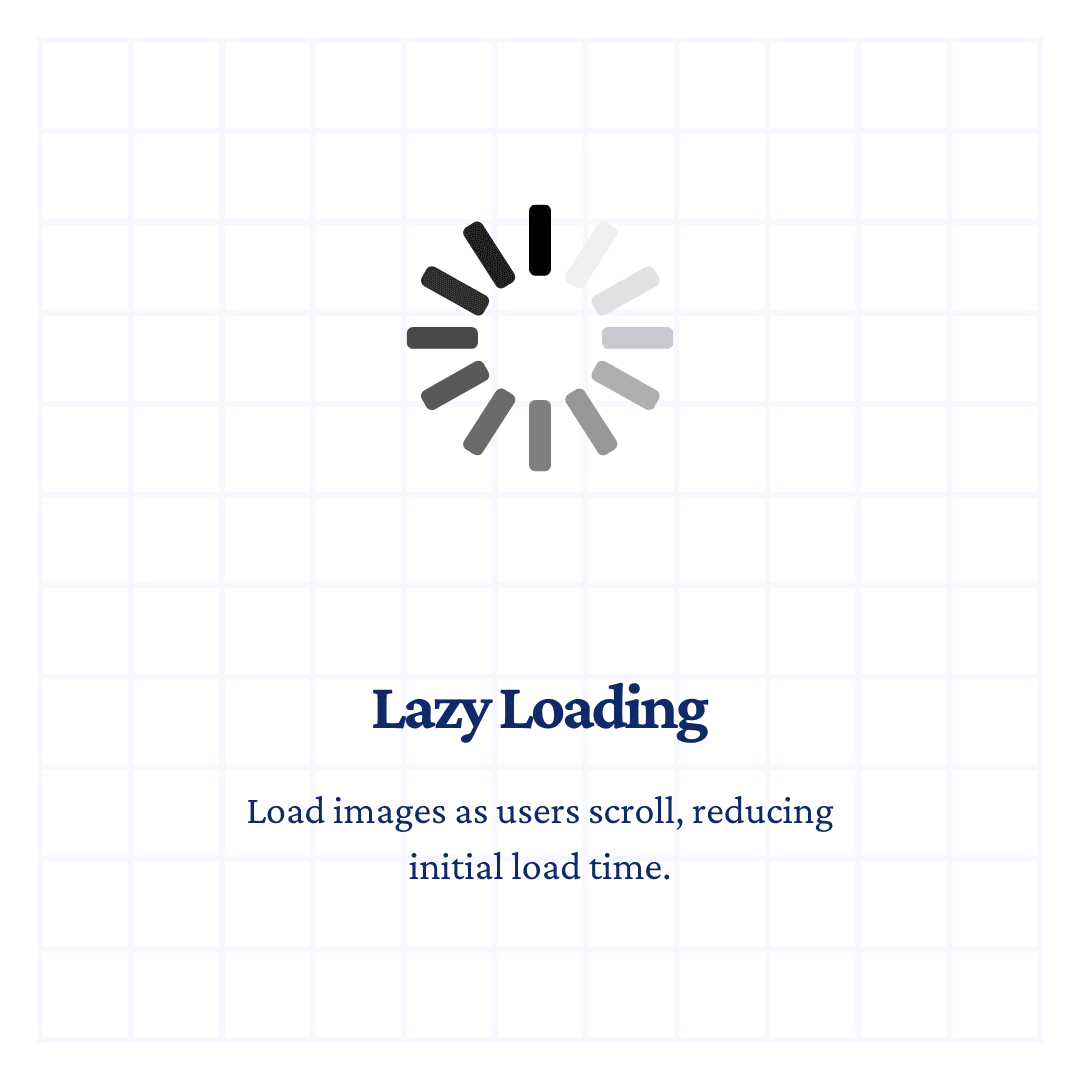How to do Image Optimization for a Website?
Learn the art of How to do Image Optimization for a Website: From file compression to resolution tweaks, elevate your web performance effortlessly.
Image Optimization for Website is paramount in today's digital landscape, where seconds can make a decisive difference. Images play a pivotal role in this equation, significantly impacting load times. Unoptimized images can bog down a website, leading to sluggish performance and higher bounce rates. However, by embracing image optimization techniques, such as compression and resizing, websites can experience remarkable improvements in speed and performance.
Discover and implementing these optimizations not only enhances user experience but also contributes to higher SEO ranking and increased visitor engagement:
Understanding the Importance of Image Optimization:
In the digital landscape, images play a pivotal role in captivating audiences, but their impact goes beyond aesthetics—they significantly influence website performance. Optimizing images is key to enhancing load times, a crucial factor that directly impacts user engagement and site ranking. Studies reveal a strong correlation between load times and bounce rates, with a mere delay of a few seconds leading to a substantial drop in user engagement. By understanding the pivotal role images play in website load times, businesses can proactively boost their online presence, ensuring a seamless and engaging user experience while positively impacting their SEO standing.
Types of Image Formats and Their Impact on Load Times:

Understanding Image Formats:
- JPEG (Joint Photographic Experts Group):
File Size & Quality: Known for its compression capabilities, JPEG reduces file sizes while maintaining decent image quality. Ideal for photographs and images with complex color gradients.
Impact on Load Times: JPEGs load swiftly due to their smaller file sizes, making them ideal for web use.
- PNG (Portable Network Graphics):
File Size & Quality: PNGs support lossless compression, preserving high-quality images with transparent backgrounds. Best suited for graphics, logos, and images requiring transparency.
Impact on Load Times: PNGs tend to have larger file sizes compared to JPEGs but offer exceptional quality, impacting load times slightly.
- GIF (Graphics Interchange Format):
File Size & Quality: GIFs support animations and have a limited color palette, making them suitable for simple animations, logos, and graphics.
Impact on Load Times: Generally smaller in file size due to limited colors and frame complexity, facilitating faster loading.
- SVG (Scalable Vector Graphics):
File Size & Quality: SVGs are vector-based, allowing infinite scalability without loss of quality. Perfect for logos, icons, and simple graphics.
Impact on Load Times: SVGs are incredibly lightweight, leading to swift load times, especially for scalable graphics.
Recommendations for Usage:
- JPEG: Use for photographs or images with complex color details where preserving image quality is essential while maintaining a smaller file size.
- PNG: Optimize for PNG when transparency or higher image quality is necessary, even if it results in slightly larger file sizes.
- GIF: Employ for simple animations or images requiring a small color palette, ensuring quicker loading times for animated content.
- SVG: Utilize SVGs for scalable graphics like logos and icons, prioritizing speed due to their incredibly small file sizes.
Best Practices for Image Optimization
1: Image Compression Techniques

When it comes to optimizing images for websites, employing efficient compression techniques is paramount. Understanding the nuances between lossy and lossless compression is key.
- Lossy Compression: This method reduces file size by eliminating non-essential information. While it may slightly compromise image quality, the difference is often negligible to the human eye.
- Lossless Compression: Unlike lossy compression, this technique preserves image quality entirely while reducing file size.
Step-by-step Guide to Effective Compression:
- Choose the Right Format: Optimize for JPEG for photographs and PNG for images with transparency or text.
- Select the Ideal Compression Level: Strike a balance between quality and file size by adjusting the compression level.
- Use Online Tools or Software: Upload images to compression tools and software, tweaking settings for optimal results.
- Check Image Quality: Always preview compressed images to ensure they maintain satisfactory quality.
2: Image Resizing and Scaling

Resizing and scaling images appropriately is crucial for an optimized website.
Here's how to ensure your images fit seamlessly within website dimensions without sacrificing quality.
Importance of Resizing:
Oversized images slow down loading times. Resize images to match the required dimensions without stretching or distortion.
Tips for Scaling:
- Aspect Ratio Preservation: Maintain the original aspect ratio to prevent distortion.
- Utilize CSS: Implement CSS rules to resize images while maintaining proportions.
- Responsive Images: Adopt responsive design techniques to serve different-sized images based on device resolutions. Use the srcset attribute in HTML for this purpose.
3: Lazy Loading for Images

Lazy loading is a game-changer for optimizing website load times, particularly for pages with multiple images.
Understanding its impact and implementation is vital.
Lazy Loading Explanation:
Lazy loading defers the loading of images until they're about to be displayed on the user's screen. This significantly reduces initial load times, especially for content-heavy pages.
Implementation Techniques:
- JavaScript Libraries: Utilize JavaScript libraries like Lazy Load or Intersection Observer to implement lazy loading seamlessly.
- Content Management Systems (CMS): Many CMS platforms offer plugins or built-in options for lazy loading. Activate this feature to improve your site's performance effortlessly.
Conclusion:
Optimizing images for your website is a crucial step in enhancing user experience, improving site performance, and boosting SEO rankings. By implementing the right techniques such as choosing the correct file format, resizing and compressing images, utilizing descriptive alt text, and leveraging responsive design, you can significantly reduce load times while maintaining visual quality. Prioritizing image optimization not only ensures faster page loading but also contributes to a seamless and engaging browsing experience for your visitors. Remember, small changes in image optimization can lead to significant improvements in overall website performance, making it a worthwhile investment for any online presence.
Share:
Latest Posts
Have a project in mind ?
Are you a start-up?
We offer landing page development for selected startups for free
